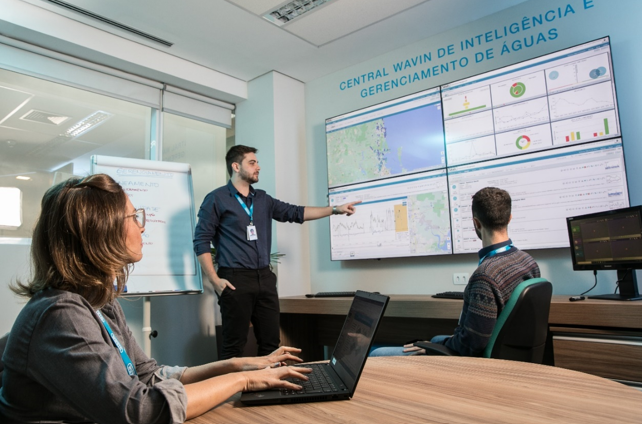This article is part of Orbia’s Megatrendsetters series, which explores how Orbia’s solutions address the transformative forces—“megatrends”—that are reshaping our world, from decarbonization and the circular economy to shifting supply chains and agribusiness to global water and digitalization. To learn more about Orbia’s Orbia’s Water Network Management, visit Orbia Wavin’s website here.
Demand for fresh water is rising faster than ever. Climate change, urban growth and aging infrastructure are straining supplies, while leaks waste billions of liters each day. By 2030, global consumption is expected to climb by 30%, yet half of the world’s population already lives in water-stressed regions.
Against this backdrop, companies, cities and utilities are looking for measurable solutions that can help them meet commitments. One of the most ambitious commitments comes from Microsoft, which aims to be water positive by 2030. Its strategy has five key pillars: reduce water-use intensity across global operations, replenish more than the company consumes in priority locations Microsoft does business, provide people with access to water and sanitation services globally, drive innovation and data digitization and advocate for water policy across the globe.
Helping to turn that ambition into reality is Orbia’s Building & Infrastructure business Wavin.
Scaling a Shared Commitment
In the fall of 2024, Orbia announced a collaboration with Microsoft to support the company’s water replenishment targets through a series of water-positive projects. This initial project launched with SANASA, the public water supply and sanitation company serving Campinas in São Paulo, Brazil. The region has endured seven droughts in the past decade and relies heavily on the PCJ watershed, which provides more than 70% of São Paulo’s water supply.
Under a 10-year agreement, Orbia, Microsoft and SANASA are working together to reduce water losses across SANASA’s Campinas network using Orbia’s Water Network Management technology and expertise.
After just one year, the collaboration is already delivering measurable results. From the project’s launch in July 2024, until the end of June 2025, the project achieved a volumetric water benefit of over 370,000 cubic meters—the equivalent of 151 Olympic swimming pools. The goal for year two is even more ambitious: to reach 622,000 cubic meters, with a long-term target of saving more than 2.5 million cubic meters annually once the system is fully implemented.

The Orbia Building & Infrastructure Central Control Room in São Paulo, Brazil which serves all customers using the Water Network Management platform
The Technology Making it Possible
At the heart of the solution is Orbia’s cloud-based Orbia’s Water Network Management (WNM) platform, delivered in collaboration with TaKaDu. The service combines advanced machine learning algorithms with a central control room in São Paulo, where Orbia water engineers monitor data flows from flow meters and pressure sensors installed throughout SANASA’s network.
The system continuously analyzes patterns to detect leaks, bursts, faulty assets and telemetry issues—often before they become a crisis. By providing predictive, actionable insights, Orbia enables SANASA to identify early-stage leaks, prioritize repairs, reduce non-revenue water and improve overall network efficiency.
This initiative is designed as a decade-long transformation rather than a one-time intervention. As SANASA continues to add distributed metered areas and sensors across its network, the WNM platform’s coverage—and the volume of water conserved—will steadily increase.
As global water demand continues to rise, projects like this show that replenishment at scale is possible. By pairing cutting-edge technology with long-term collaboration, Orbia and Microsoft are proving that protecting the world’s most precious resource is not only achievable—it’s already underway.
